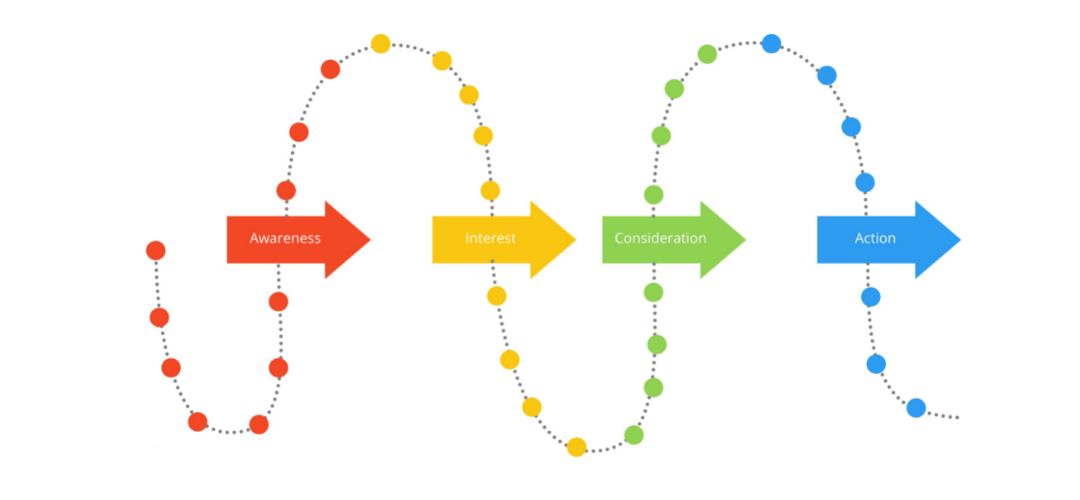Why is Digital Marketing Important for Manufacturers?
In today’s competitive market, manufacturers must compete not only against other manufacturers but also against their competitors who offer similar products.
Digital marketing helps manufacturers connect with consumers through various channels such as social media, email, mobile apps, etc.
Digital marketing is absolutely critical for manufacturers. To compete effectively in the global marketplace, manufacturers need to understand that consumers expect brands to deliver high-quality goods and services at competitive prices. Consumers expect brands to be transparent about their product development process, and they expect brands to communicate clearly about their products and services. Digital marketing provides manufacturers with the tools needed to meet these consumer demands. While traditional advertising methods such as print ads and television commercials may still play a role in reaching potential customers, digital marketing offers manufacturers the opportunity to interact with consumers in ways that weren’t possible before. By leveraging digital marketing, manufacturers can improve their ability to attract customers, retain current customers, and win new ones.
How Does Manufacturing Use Marketing?
Manufacturing uses marketing to attract new customers, keep current customers loyal, and improve sales. Manufacturers use marketing to communicate their product benefits and features, educate consumers about their products, and encourage them to try new products. Some manufacturers use direct mail, advertising, trade shows, and events to spread the word about their products. Others rely heavily on social media, such as Facebook and LinkedIn, to interact with customers and prospects. Other methods include email campaigns, press releases, and webinars. Manufacturers should always consider how different forms of marketing fit together to achieve their overall objectives.
Due to the COVID-2019 pandemic and the in-person limitations that it brought, the manufacturing industry has experienced fast-accelerated digital marketing. Manufacturing companies saw an increase in website usage of 12 percent last year.

Why is good marketing content important for manufacturers?
Good content is critical for manufacturers because it helps them establish themselves as thought leaders in their industry. Customers look to manufacturers to solve problems, and they expect them to have answers to these issues. By creating high-quality content, manufacturers are able to demonstrate their ability to deliver solutions that meet the needs of their customers. A lot of manufacturers still struggle with creating compelling content, though. Some of the biggest challenges include finding the right balance between sales and product knowledge, knowing how to write effectively, and having a clear message. However, by investing in the creation of great content, manufacturers can improve their visibility, attract new leads, and ultimately boost their bottom line.
Close to 50% of people read three to five pieces of content from a business before reaching out for more information or a quote
What are the steps to developing a successful B2B manufacturing marketing strategy?
The best way to go about creating a successful B2B marketing strategy is by starting small and growing from there. Start by defining your product, service, and industry. Then, figure out who your ideal customer is and why he or she should care about your product or service. Next, define your current and potential competitors. Finally, identify the problems you want to solve and the benefits your product or service provides. Once you’ve got these things down, you can move forward with the rest of your B2B marketing strategy.
Step 1: Define Your Product, Service, and Industry
Step 2: Identify Who Your Ideal Customer Is and Why He or She Should Care About Your Product or Service
Step 3: Define Your Current and Potential Competitors
Step 4: Identify the Problems You Want to Solve and the Benefits Your Product or Service Provides
Step 5: Create a Winning B2B Marketing Plan
Step 6: Implement Your Plan

Do I need to build personas for my content marketing strategy?
Personas are fictional characters created by marketers to represent different groups within a target audience. These characterizations allow you to understand your audience better, and focus your efforts accordingly. By creating these personas, you can identify the needs of your audience members and tailor your content to meet those needs. A successful content marketing strategy should include a mix of both written and visual content. While writing content is certainly valuable, visuals play a big role in keeping readers engaged. Plus, images can go viral faster than anything else on the web. So, having a solid understanding of your audience is crucial to developing a good content marketing strategy.
Why is the buyer’s journey an important piece when creating content marketing?
Buyers’ journeys are critical pieces of any successful content marketing strategy. A good content marketing plan should include a clear understanding of the stages that prospects go through when considering buying a product or service. These stages are called buyer’s journeys, and they consist of four distinct phases: awareness, interest, consideration, and action. Each phase represents a different stage along the path to purchasing a product or service. By knowing these four steps, you can craft content that speaks to your audience at each point in the process. Once you understand the stages that lead to purchase, you can write content that addresses the needs of each step in the process. For example, if you sell software, you could write articles that address topics like “How to Choose a New Computer,” “How to Set Up Your Software License Agreement,” and “How to Find Out How Much Money Your Company Will Save by Purchasing Our Product.”
Prospective clients are increasingly reliant on digital research to help them choose which manufacturers to work with. According to Gartners, over 79% of business-to-business buyers use supplier websites at each stage of the buyer’s buying journey, from identifying a need to making an internal decision about which supplier to buy from. As far as choosing a B2B supplier goes, the number of buyers who rely on online information is as large as 86%.
57% of the purchase decision process is complete before a customer even calls a supplier.
How to build your buyer’s journey.
Buyers’ journeys are a tool that marketers use to understand their customers better. A buyer’s journey map is like a road map that shows the different stages of buying behavior. It helps you identify the steps your customers take when they’re considering purchasing something. It’s also a great way to see where your customers drop off along the path to becoming a paying customer. By understanding these steps, you can make sure that you’re offering the right product at the right price point at the right time. There are four major phases of a buyer’s journey: awareness, interest, consideration, and action. These phases represent the different ways that customers interact with your brand. Awareness refers to when a customer first hears about your brand. Interest occurs when they start thinking about buying your product. Consideration happens when they start researching your product and comparing options. Action is when they finally decide to buy your product. Each phase represents a stage in the process of turning a prospect into a customer. Understanding these stages is critical to creating a successful sales funnel.
Awareness: This is the beginning of the journey. At this point, prospects haven’t made any decisions yet, but they may be starting to consider your brand. They could be exposed to your ads, promotions, or other forms of marketing. In order to capture their attention, you’ll need to offer something unique or compelling enough to pique their interest.
Interest: Once they’ve been introduced to your brand, they’re now curious about your product or service. Now they’re ready to compare prices and features, read reviews, and maybe even try out a demo.
Consideration: After they’ve decided to buy, they’re still evaluating their options. They may be weighing pros and cons, reading reviews, or trying out demos. At this point, they’re probably already familiar with your brand and your competitors.
Action: Finally, after they’ve made a final choice, they’re ready to buy. They may be ordering online, calling your store, or visiting your website.

What Is Inbound Marketing and how does it work for manufacturers?
Inbound marketing is a type of marketing strategy that relies heavily on creating valuable content that attracts visitors to your website. Once they arrive, they’re encouraged to take action by signing up for email lists, downloading white papers, watching videos, and reading blogs. By offering free resources like these, you’re able to establish yourself as an authority in your industry and attract prospects who may otherwise never have heard of you.
Content marketing is proven to be effective at building something far more valuable than just another website. It provides educational, insightful content that showcases your expertise and positions your company as a knowledgeable and helpful partner. It also aligns well with the way industrial and business buyers operate in today’s market, as 57 percent of the purchase decision process has already been completed before a buyer even calls a supplier.
The goal of inbound marketing is to turn leads into customers, and once you have a steady stream of qualified leads coming in, you can focus on converting them into paying clients.
Develop Your Marketing Strategy & Set Clear Goals.
The purpose of any marketing plan is to identify your target audience, understand what motivates them and what problems they face, and design a message that addresses these issues. A good marketing strategy should include a clear set of goals, objectives, and KPIs. These metrics should be tied to measurable outcomes such as sales, leads, website visits, etc. Once you have identified the right metrics, you can measure progress toward reaching your goals.
Developing a clear understanding of your current position within the marketplace and setting realistic goals for your organization is critical to any successful marketing plan. A good marketing strategy provides direction for your efforts and establishes benchmarks against which you can measure progress.
The following steps outline the process for developing a marketing strategy that works best for your organization.
1. Understand Your Market – Identify the needs and wants of your target audience. Define the problem you solve and why it matters to your prospects. Determine who your ideal customer is and what motivates them to act.
2. Create a Vision Statement – Describe the kind of organization you’d like to be. Explain how your product or service fits into the larger picture. How will you differentiate yourself from competitors?
3. Analyze Current Situation – Examine the strengths and weaknesses of your current situation. List the obstacles and barriers standing in the way of achieving success.
4. Evaluate Options – Consider the options available to you. Which ones fit best with your vision statement? Which ones will give you the greatest chance of reaching your goals?
5. Make a Decision – Choose the option that aligns best with your vision statement. Decide how much effort you should put into executing that strategy.
6. Implement Plan – Put your plan into action. Track progress regularly and adjust course as needed.
7. Monitor Results – Measure your results periodically. Adjust your approach as necessary. Continue to evaluate your performance and refine your plan.
8. Revise Plan – Repeat Steps 1–7 until you achieve your desired outcomes.
9. Celebrate Success – Recognize the accomplishments of your team members and celebrate your successes together.
10. Maintain Ongoing Commitment – Keep working toward your goal. Don’t become complacent; continue to monitor and assess your performance.
11. Be Flexible – Adapt your strategy as circumstances change.
12. Take Action – Execute your plan.
13. Review Performance – Revisit your plan periodically to ensure that it continues to serve your purpose.
How do I know my B2B manufacturing content marketing is working?
There are many ways to measure the success of your manufacturing content marketing efforts. One of the easiest ways is by measuring your leads and conversions. Another way is by analyzing the ROI of your content marketing budget. There are lots of different metrics you can look at, such as the number of visitors to your website, the number of leads generated, and the number of purchases made. However, these numbers aren’t always easy to interpret, so you may want to consider using lead scoring software to analyze your data. Lead scoring software can tell you exactly how much money you spent on your content marketing campaigns and how many leads you got from each piece of content. Then you can compare that against the amount of revenue you generate from your sales team. This will give you a clear picture of how much money you’re spending on content marketing compared to your actual sales results.
As a manufacturer, you need to understand what digital marketing means for your company. In fact, there are several reasons why manufacturers should care about digital marketing, including:
1. Consumers are spending less time reading print ads and more time browsing the web.
2. Social media has become a major source of information for consumers.
Manufacturing Companies Should Be Using Digital Marketing
In conclusion, digital marketing has become increasingly important for manufacturers because it allows them to reach potential customers where they spend their time online. This means that manufacturers can use social media sites like Facebook and Twitter to connect with consumers who want to buy their products. In turn, these companies can offer discounts and promotions to entice consumers to purchase their goods.
Digital marketing is also used to help manufacturers build brand loyalty among existing customers. By offering exclusive deals and coupons through email newsletters and mobile apps, manufacturers can keep loyal customers coming back for more.
As a result, companies who invest in digital marketing are able to increase sales, improve customer service, and gain valuable insights into consumer behavior. In fact, according to Forrester Research, nearly half of all consumers say that they trust reviews from friends and family over product advertisements. So if you want to build brand loyalty and boost sales, investing in digital marketing is a must.
Jumpstart Your B2B Marketing Strategy
Up for a chat?
Let’s connect, talk goals, make some plans, and share some advice.
